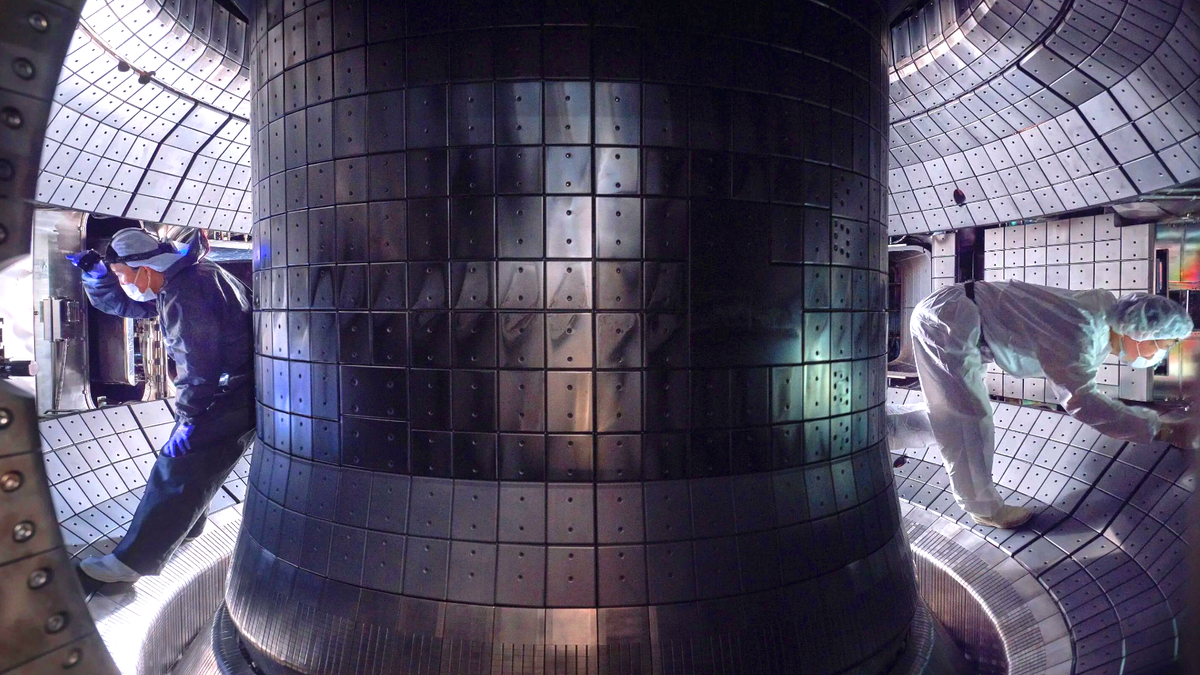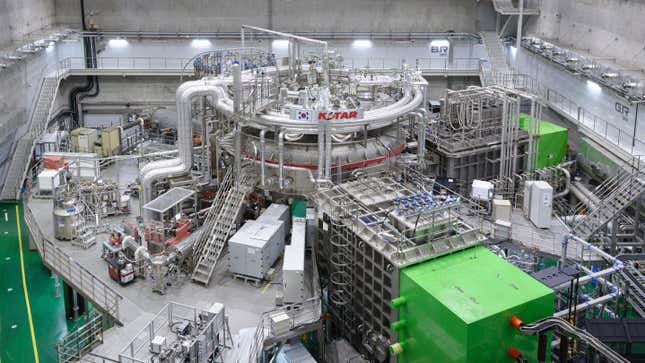
The Korea Institute of Fusion Vitality has put in a brand new diverter within the KSTAR tokamak, permitting the factitious solar to maintain high-ion temperatures exceeding 100 million levels Celsius for longer.
KSTAR—known as a man-made solar as a result of it does nuclear fusion, the identical response that powers our star—was accomplished in 2007 and achieved its first plasma in 2008. It’s about one-third the scale of ITER, the massive experimental reactor being in-built France. Each reactors are tokamaks: doughnut-shaped gadgets that do nuclear fusion with plasmas, or electrically charged gases delivered to super-high temperatures and pressures.
KSTAR makes use of a diverter, which sits on the backside of the tokamak and manages waste fuel exhaust and impurities from the reactor. The diverter is a plasma-facing part, that means it sits throughout the tokamak and bears the total brunt of the inner floor warmth. At the moment, KSTAR is able to plasma operations for about 30 seconds; scientists hope that the brand new diverter will enable plasma operations for 300-second durations by the tip of 2026.

KSTAR initially had a carbon diverter, however in 2018 scientists started engaged on a tungsten diverter for the tokamak. Tungsten has the next melting level than carbon and improves the warmth flux restrict of the reactor two-fold, in response to a current release from Korea’s Nationwide Analysis Council of Science and Expertise. A prototype of the brand new diverter was accomplished in 2021, and set up was completed final 12 months.
“In KSTAR, we now have carried out a diverter with tungsten materials which can be the selection made in ITER,” stated KFE president Suk Jae Yoo within the launch. “We are going to attempt to contribute our greatest efforts in acquiring the required knowledge for ITER via KSTAR experiments.”
Analysis into nuclear fusion has might sluggish however vital strides; in 2022, scientists at Lawrence Livermore Nationwide Laboratory managed net energy gain in a fusion reaction for the primary time. We’re nonetheless very (read: very) removed from the vaunted objective of a dependable, zero-carbon power supply, and the achievement got here with caveats, however it nonetheless confirmed that the sector is plodding ahead.
ITER’s first plasma is anticipated in 2025, and first fusion is slated for 2035. However the reactor’s timelines have slipped whereas its prices have ballooned, from about €5 billion in 2006 to over €20 billion, according to Scientific American, so we could also be ready even longer than that.
Nonetheless, these are heady instances for tokamak reactors. Last month, the six-story JT-60SA reactor in Japan was inaugurated; researchers affiliated with the mission estimate it’s going to take two years for the reactor to develop plasmas wanted for experiments. There are greater than 50 tokamaks working world wide, according to the International Atomic Energy Agency.
Plasma experiments with KSTAR’s new tungsten diverter will proceed via February, in response to the Nationwide Analysis Council of Science and Expertise, because the tokamak scientists be sure the surroundings is steady for experiments and that the 100-million-degree plasma will be reproduced in it.
Trending Merchandise

















